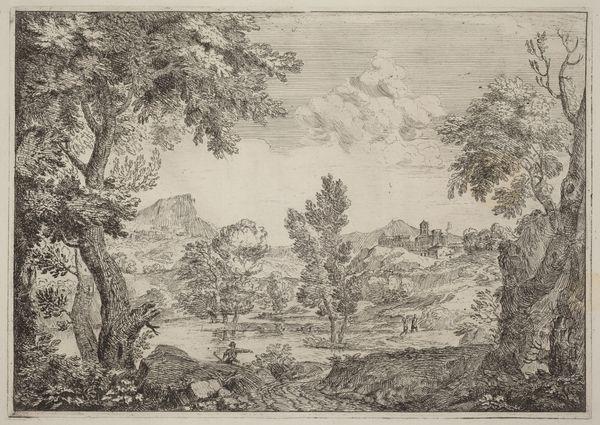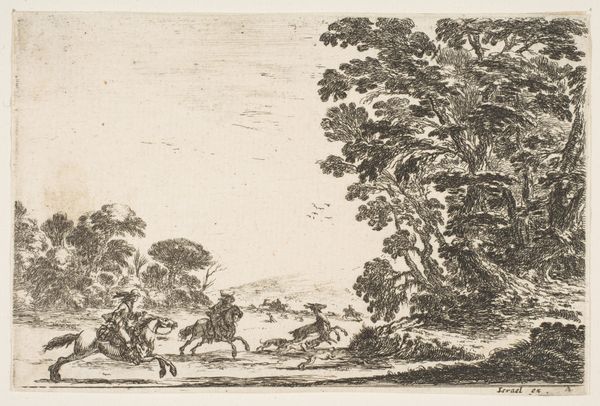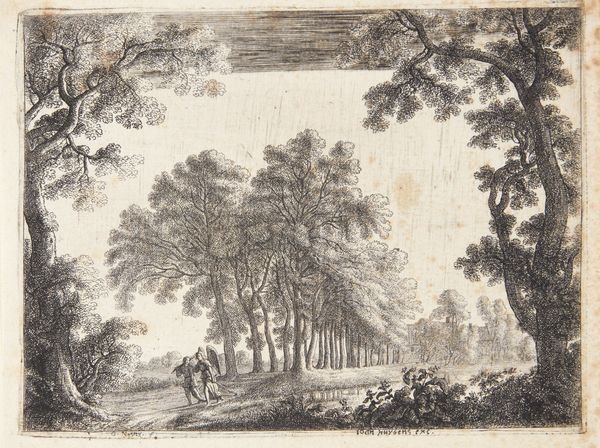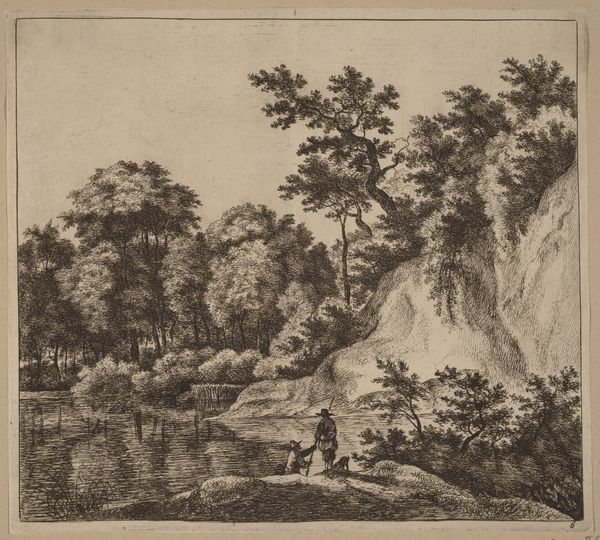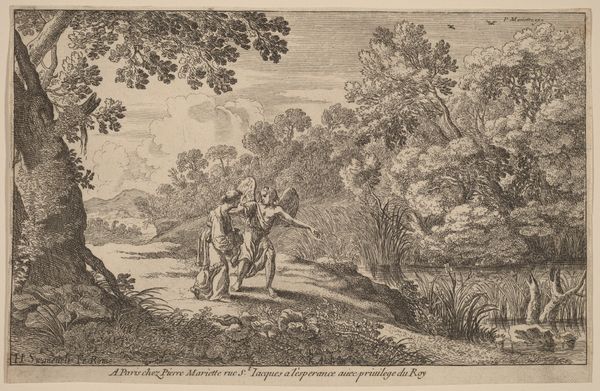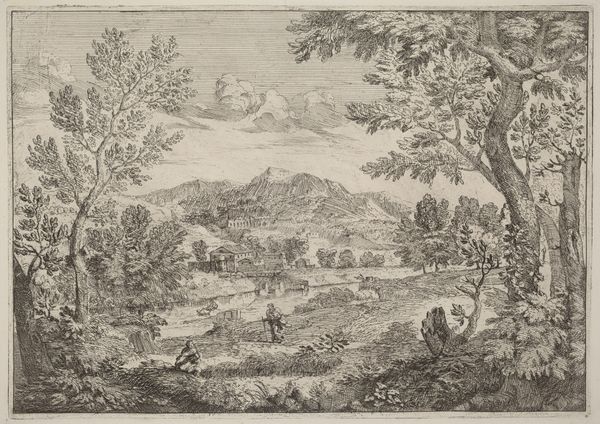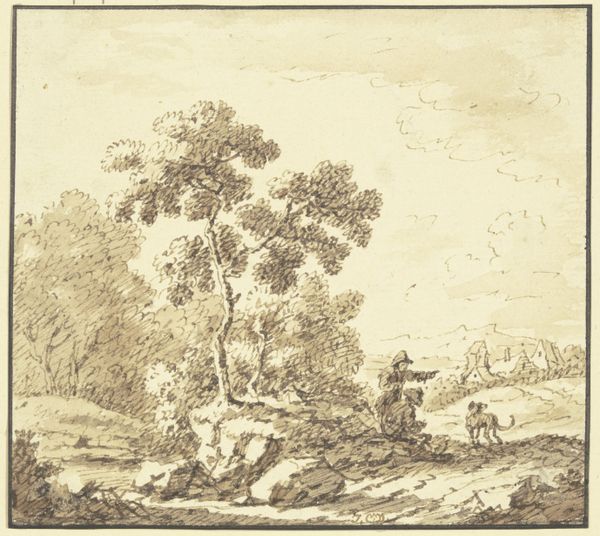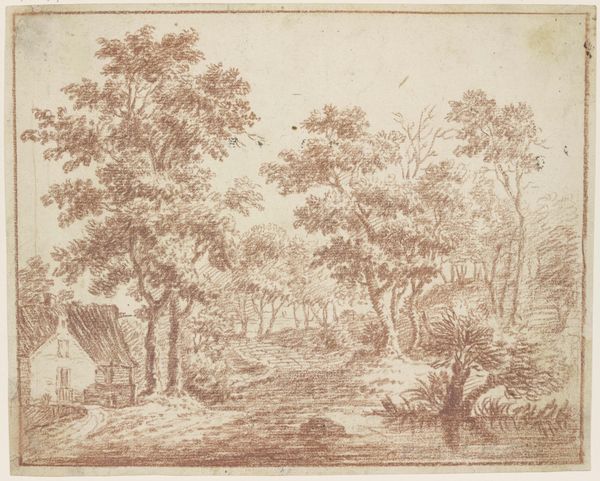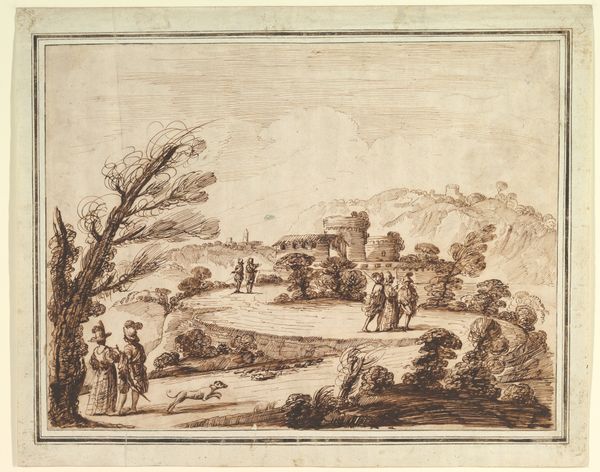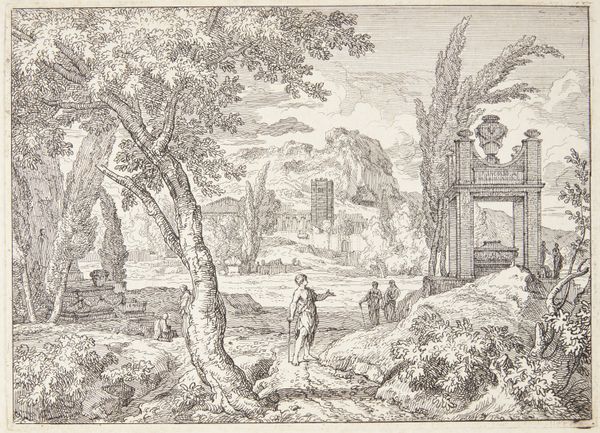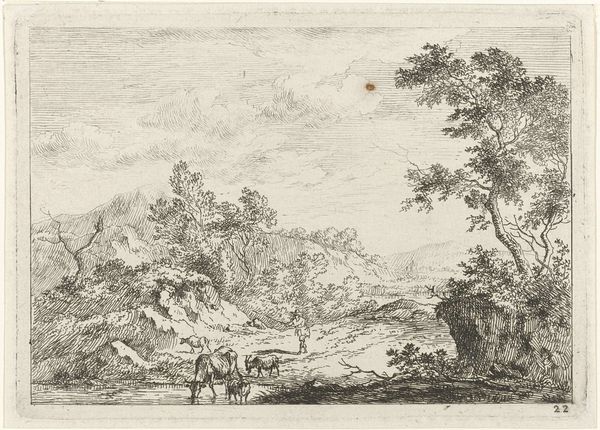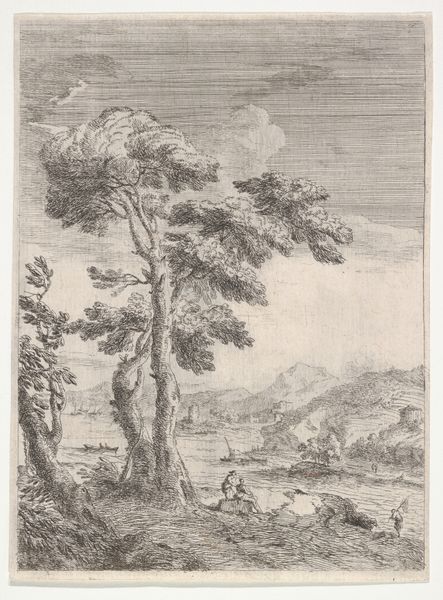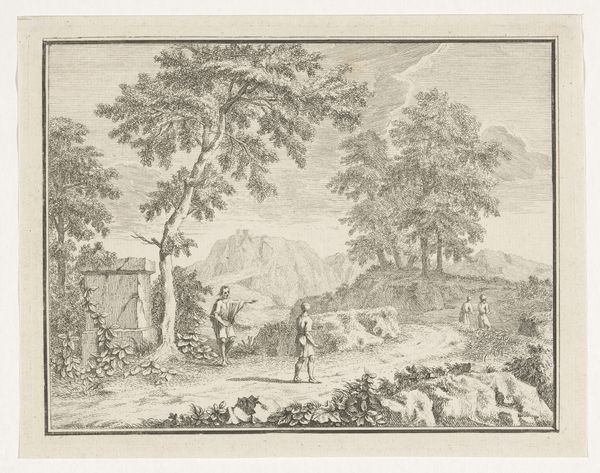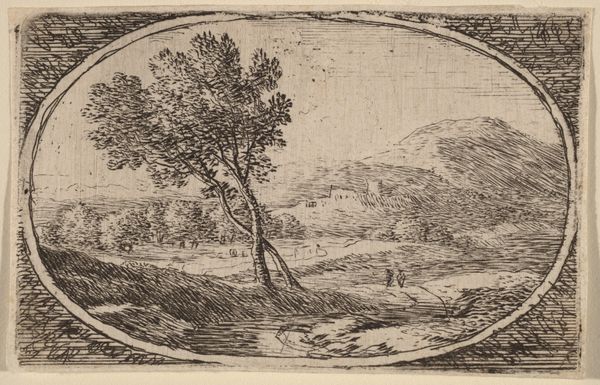
The Angel Advises Tobie (L'Ange conseillant Tobie) 1625 - 1685
0:00
0:00
drawing, print
#
pencil drawn
#
drawing
#
amateur sketch
#
toned paper
#
light pencil work
# print
#
pen sketch
#
pencil sketch
#
incomplete sketchy
#
landscape
#
pen-ink sketch
#
men
#
pen work
#
watercolor
#
angel
Dimensions: sheet: 7 5/8 x 10 1/2 in. (19.4 x 26.7 cm)
Copyright: Public Domain
Curator: Henri Mauperché’s, The Angel Advises Tobie, a print created sometime between 1625 and 1685, currently held at the Metropolitan Museum of Art, offers a glimpse into a narrative scene set within a serene landscape. What's your initial response to the visual composition? Editor: There's a stark contrast between the delicacy of the rendering and the apparent monumentality it depicts. The ethereal lightness achieved with what looks like pen and ink, combined with watercolor washes on what looks like toned paper, seems at odds with the weighty subjects, creating a slightly unsettling yet intriguing mood. It feels almost alchemical. Curator: Precisely! Notice how the medium, likely printmaking judging by the clear lines, enhances the landscape's delicate interplay between light and shadow. The architectural elements, like the fluted columns, juxtapose sharply with the organic forms of the trees, creating a dynamic tension within the composition. Editor: Absolutely, that juxtaposition speaks volumes about the period's changing sensibilities, but I'm especially drawn to the material process itself. What sort of labor and workshops went into preparing the printing plates and inks? Was the tonal paper made with specialized fiber that lent the scene luminosity, almost as if backlit from within? These questions really add a layer of appreciation to this work beyond mere pictorial representation. Curator: Well, the medium enables distribution, of course, and it is certainly designed to communicate an allegorical and moral narrative; we see Tobie receiving guidance, a classic example of divine intervention visualized through calculated compositional arrangements. It conforms neatly to established representational practices and symbolic frameworks. Editor: True, but let's consider the tangible impact, too. Were these prints intended for devotional spaces, to enhance spiritual experience, or for more secular appreciation among the educated class? How accessible were the raw materials and processes of creating such pieces? Curator: Regardless of original context, the enduring appeal of "The Angel Advises Tobie" lies in its structural balance. Note how Mauperché directs our eye through a skillful deployment of contrasting shapes, tones and precise lines of a classical form which leads to symbolic gestures. The linear articulation, which adheres perfectly to baroque landscape styles, lends an atmospheric sensibility. Editor: Fair enough, the art’s composition is beautifully laid out, and my materialist gaze only hopes to deepen that appreciation, not detract from it, by contextualizing it within the actual making of its time. The value for me lies equally within the hand that made it as well as in what the finished piece displays. Curator: A fruitful examination, indeed. Editor: I agree, there's always more to learn from art with multiple interpretive frames.
Comments
No comments
Be the first to comment and join the conversation on the ultimate creative platform.
